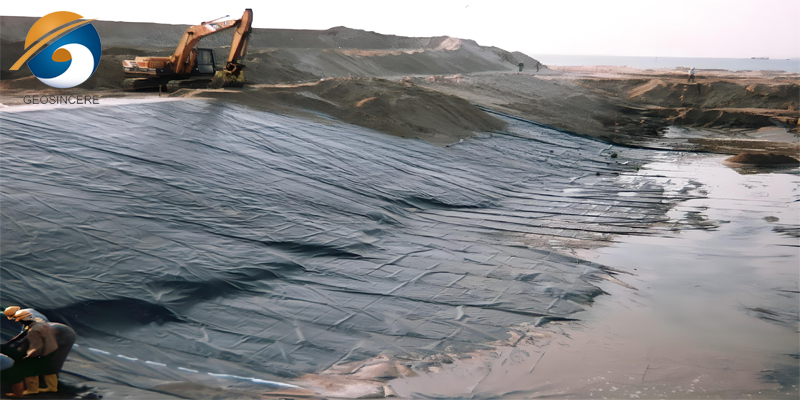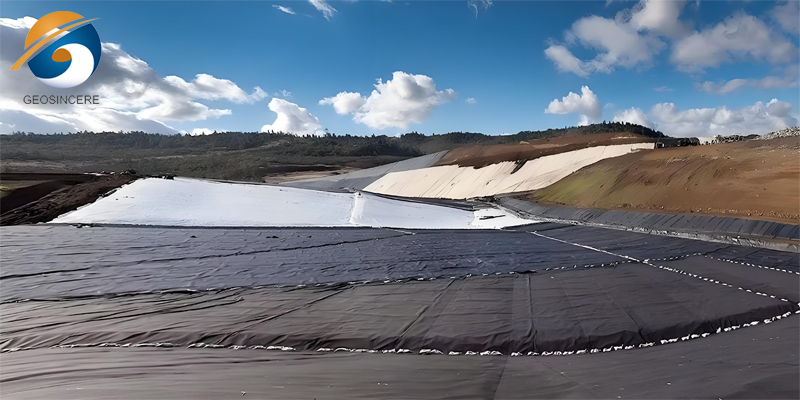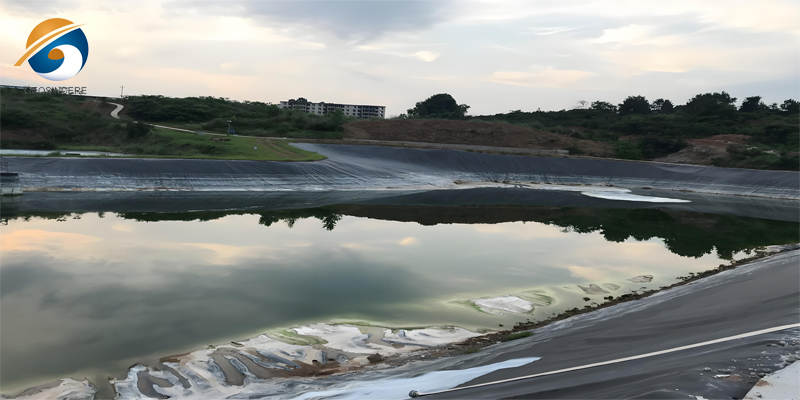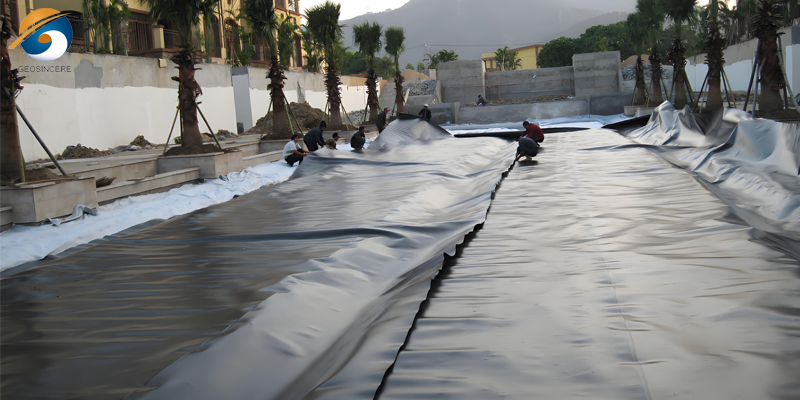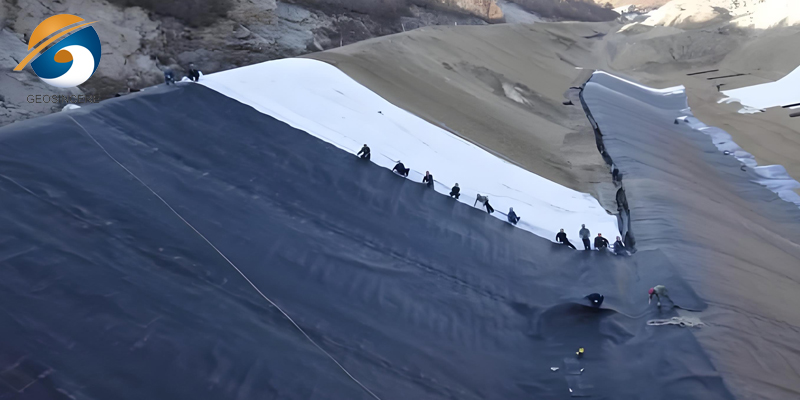What Are The Benefits of Using 1mm HDPE Geomembrane?
1mm HDPE geomembrane is a synthetic material widely used in engineering and construction applications, mainly for enclosure and environmental protection. This type of geomembrane is renowned for its excellent durability and versatility, serving as a necessary barrier against water, chemicals, and various environmental factors. Its unique performance makes it the perfect choice for tasks ranging from landfill liners and pond liners to reservoirs and agricultural applications. In this article, we will discover several advantages of using 1mm HDPE geomembrane, emphasizing its effectiveness in improving water resource management, promoting sustainability, and ensuring long-term reliability in various environments.
1. What is HDPE Geomembrane?
1mm HDPE geomembrane is a high-density polyethylene lining primarily used for waterproofing and sealing applications. This geotextile is made of high-quality polyethylene resin, which has first-class chemical resistance, UV stability, and durability, and is suitable for various environments and engineering projects. HDPE geomembranes are typically suitable for various thicknesses, such as 1mm, aimed at preventing leaks and protecting the underlying soil and groundwater from pollution.
The manufacturing process requires advanced extrusion technology to ensure uniform thickness and high tensile strength. Therefore, 1mm HDPE geomembranes can withstand harsh environmental conditions, including harsh temperatures and mechanical stresses. They are commonly used in landfills, mining operations, wastewater treatment facilities, and agricultural applications to provide good barriers for liquids and gases. In addition to its functional advantages, 1mm HDPE geomembrane is also lightweight and easy to install, making it the preferred choice for engineers and contractors worldwide.
2. What Factors Contributing to the Long Lifespan of 1mm HDPE Geomembrane?
2.1 Material composition
-HDPE geomembrane is made of high-density polyethylene and is known for its strength and durability. This material is resistant to punctures, tears, and impacts, ensuring durability even in traumatic environments.
2.2 Chemical resistance
-One of the main advantages of HDPE is its excellent resistance to various chemicals composed of acids, bases, and hydrocarbons. This resistance can prevent degradation and extend the lifespan of geomembranes in industrial and environmental applications.
2.3 UV stability
-HDPE geomembrane is formulated with ultraviolet stabilizers to protect it from the harmful effects of sunlight. This feature helps prevent brittleness and deterioration over time, especially in external applications.
2.4 Temperature tolerance
-HDPE can withstand various temperatures from low to high. This thermal balance ensures that the geomembrane maintains its integrity and overall performance under various climatic conditions.
2.5 Low permeability
-The low permeability of HDPE geomembrane minimizes water infiltration and reduces the possibility of organic matter or chemical reactions that may damage the material.
2.6 Correct installation
-The service life of geomembranes is largely influenced by their installation. Appropriate techniques, as well as lap welding and non penetrable anchoring, can prevent damage and prolong the lifespan of the material.
2.7 Maintenance Practice
-Regular inspection and refurbishment can detect feasible issues early on before causing widespread damage. Maintaining the ease of use and particle free nature of geomembranes also helps to maintain their overall performance and durability.
2.8 Environmental factors
-The overall performance of geomembranes in specific environments, such as soil composition, humidity levels, and chemical exposure, can affect their lifespan. Choosing suitable products for engineering applications and environments is crucial.
3. How Does The Flexibility of 1mm HDPE Geomembrane Enhance Its Application?
3.1 Easy to install
-The flexibility of 1mm HDPE geomembrane makes it easier to handle and set up in various environments. It can adapt to irregular surfaces and complex shapes, reducing on-site preparation and achieving faster installation.
3.2 Adapt to ground movements
-Flexible geomembranes can adapt to slight ground movements such as settlement or movement, except for cracking or tearing. This adaptability is typical in areas susceptible to seismic or soil movements, ensuring long-term performance.
3.3 Enhance sealing
-The flexibility of the fabric improves the effectiveness of seams and seams. It allows for higher contact and sealing throughout the entire welding process, which is essential for preventing leaks and ensuring uninterrupted barriers.
3.4 Reduce stress concentration
-Flexible geomembranes distribute stress more evenly across the entire surface. This attribute minimizes the risk of local failures, which may occur under rigid materials and may cause additional cracking or damage under pressure.
3.5 Multi functionality of applications
-The flexibility of 1mm HDPE geomembrane makes it suitable for various applications ranging from landfill lining and pond lining to aquaculture and mining operations. Its ability to adapt to unique contours and environments enhances its usability.
3.6 Resistance to damage
-Compared to inflexible alternatives, flexible geomembranes are less likely to be damaged. This elasticity helps maintain the integrity of the barrier over time, especially in areas with heavy equipment or pedestrian traffic.
4. What Are the Applications Where 1mm HDPE Geomembrane is Commonly Used?
4.1 Landfill Liners
- Used to stop leachate from contaminating soil and groundwater, 1mm HDPE geomembranes serve as fine boundaries in landfill sites.
4.2 Pond Liners
- Ideal for agricultural ponds, aquaculture, and ornamental water features, these geomembranes hold water and stop seepage.
4.3 Wastewater Treatment
- Employed in wastewater remedy amenities to line lagoons and tanks, making sure containment of effluents and stopping groundwater contamination.
4.4 Mining Operations
- In mining, HDPE geomembranes are used to line tailings ponds and heap leach pads, defending the surroundings from hazardous materials.
4.5 Agricultural Applications
- Used for irrigation ponds and reservoirs, they assist manipulate water assets successfully by means of decreasing evaporation and seepage.
4.6 Water Reservoirs
- HDPE geomembranes line water storage facilities, making sure secure containment and minimizing water loss.
4.7 Construction Projects
- In civil engineering, they are utilized as vapor obstacles and for controlling groundwater in excavation sites.
4.8 Environmental Remediation
- Used in contaminated site cleanup to contain hazardous materials and prevent the spread of pollutants.
5. Summarize
In summary, the use of 1mm HDPE geomembrane offers numerous benefits that make it an invaluable material in various applications. Its exceptional durability, chemical resistance, and UV stability ensure long-lasting performance, while its flexibility enhances ease of installation and adaptability to different environments. By preventing leakage and contamination, this geomembrane contributes significantly to environmental protection and resource management. Whether in landfills, agricultural settings, or wastewater treatment facilities, 1mm HDPE geomembrane stands out as a reliable solution that promotes sustainability and efficiency, making it a preferred choice for engineers and project managers alike.

